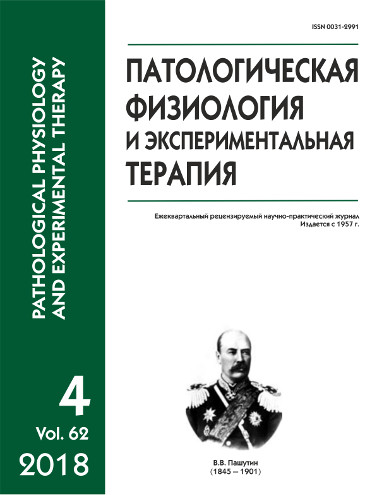Effect of risk factors on pathogenesis of anembryonia in early pregnancy loss
Abstract
Aim. To study effects of different risk factors on pathogenesis of non-developing pregnancy (NP) of type I anembryonic gestation (empty sac, ES) during early pregnancy loss (EPL). Methods. 83 women with early NP aged 18—40 were evaluated. NP of type I anembryonic gestation was diagnosed based on measurements of the uterus, ovaries, mean internal diameter of the gestational sac (GS), and the absence of embryo visualization using transvaginal ultrasound at 4—5 MHz. Historical data and age distribution of pregnant women were analyzed; standard clinical laboratory examination was performed, including blood tests for b-human chorionic gonadotropin (b-HCG), blood group, and Rh-factor. Aneuploidy was identified by molecular genetic study of choroidal tissue in 42 women with NP. Statistical treatment included filtration, determination of incidence, sorting, construction of relationships (histograms) by moving averaging, computing correlation coefficients, etc. The values registered in the database of indexes were treated using the Excel MS Office software. Results. The distribution of women with ES in relation to the age had two peaks. The first peak of ES detection occurred at the age of 24—25 in primigravids and the second peak occurred at the age of 30—31 both with first and repeated pregnancies. Ultrasound examination identified different periods of GS development. The proportion of primigravids and patients with recurrent miscarriage with ES was lower than with EPL in general. A «conventional» mean internal diameter (MID) of GS at the time of ES diagnosis was 18.3 mm (vs. normal size of approximately 31.5 mm). The period of GS development was shorter in ES than in NP in general; in the majority of patients, it lasted 21 to 35 days. The distribution of gestation duration, similar to the duration of gestational sac development, has two peaks of frequency. The mean level of b-HCG was 80—85% below the normal level. In ES, there was no correlation between b-HCG level, GS size, the gestational age when the GS development stopped, and the duration of the dead GS stay in the uterus prior to NP detection. At the lowest b-HCG level, the duration of GS stay in the uterus after embryo death was up to 4 weeks; when the b-HCG secretion was moderately low, the GS delay in the uterus was shorter (not more than 14 days). When progesterone was administered the duration of dead GS stay in the uterus was longer, and the blood level of b-HCG was still detectable compared to patients not receiving progesterone. The duration of GS stay in the uterus after the embryo death was 1 to 14 days; the maximum duration was 3—4 weeks for patients younger than 25 and older than 35. Along with chromosomal disorders (40%), significant risk factors in the ES pathogenesis was a history of gynecological (63%) and viral (40%) infections. The statistical analysis indicated a complexity of correlations; correlations of GS MID with the uterus length were observed both in patients treated and not treated with progesterone; however, this correlation was stronger for progesterone-treated patients. The time of ES growth (by MID), duration of ES stay in the uterine cavity after ES death, and b-HCG levels were different with different duration of gestation before the appearance of ES first signs. Correlations of these indexes were complicated for patients with and without blood spotting. Conclusion. Early ultrasound examination at week 8 of pregnancy allows identifying ES in time to expedite therapy and improve its quality. The progesterone treatment did not improve the pregnancy development in ES.






